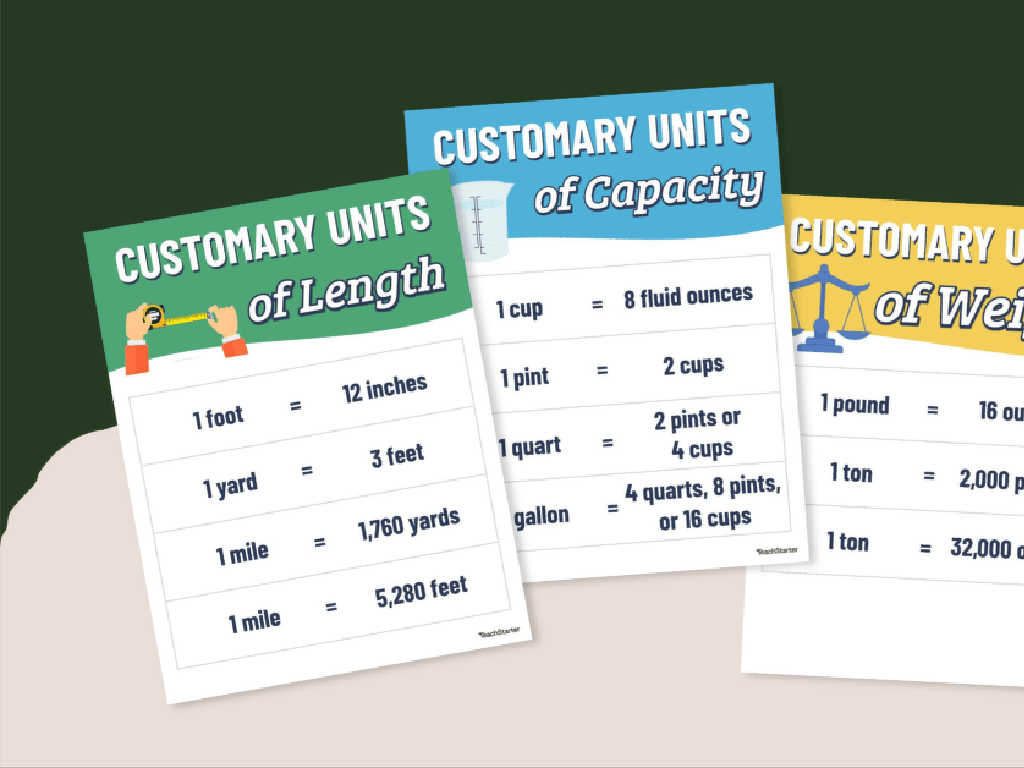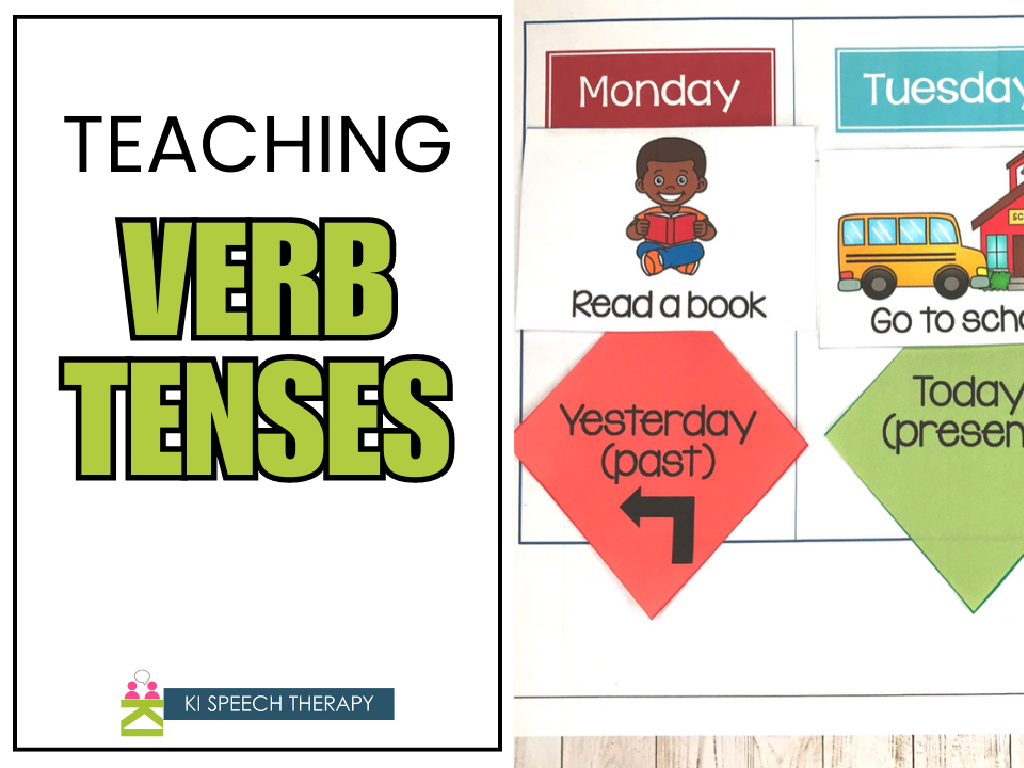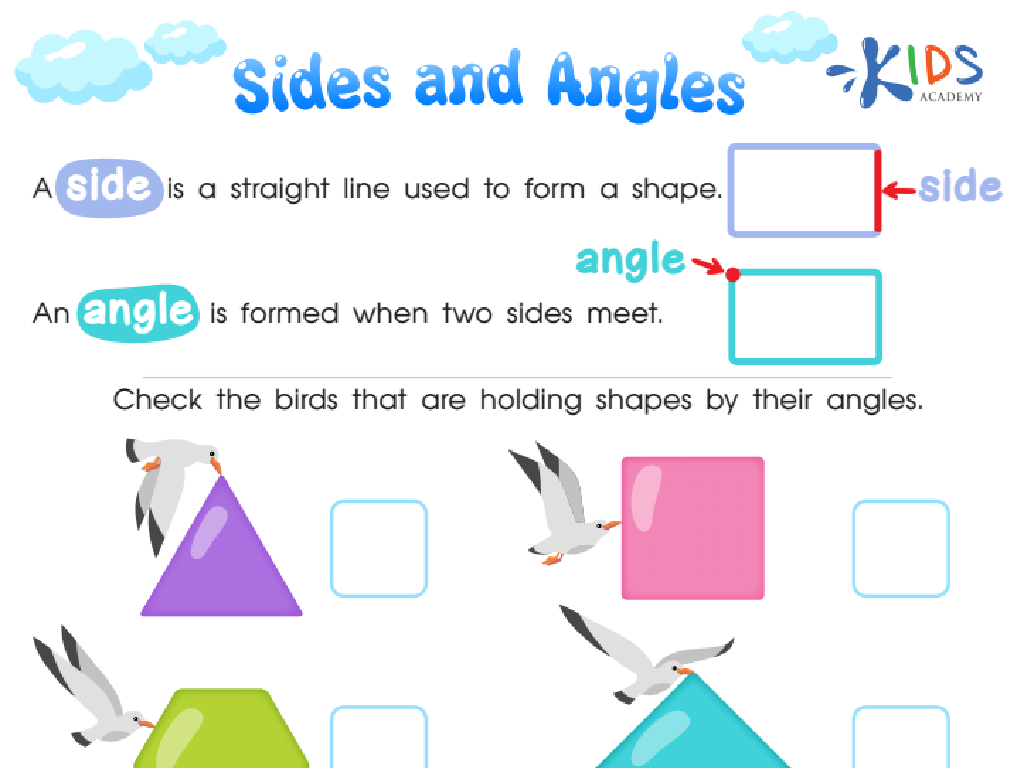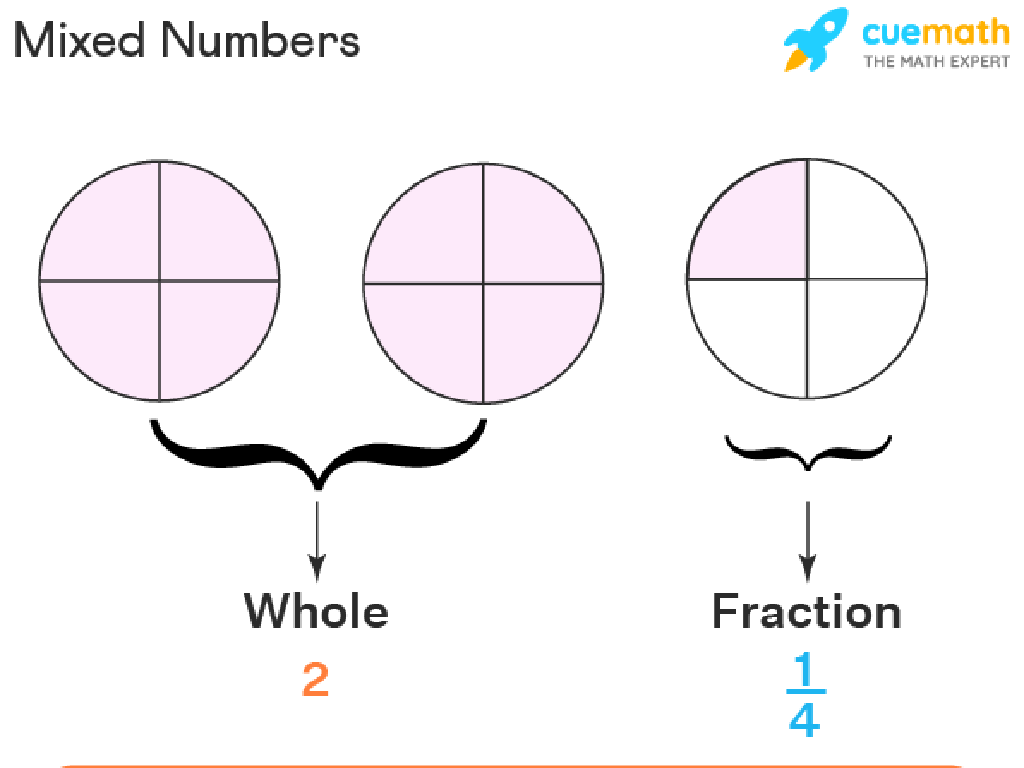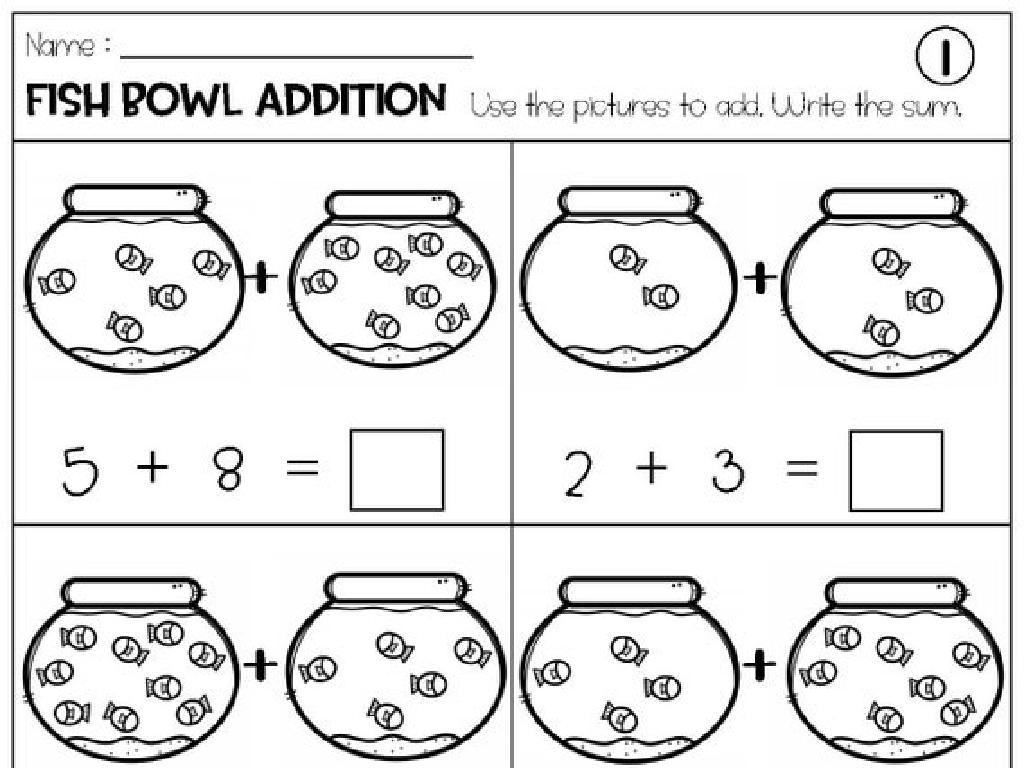Classify Changes To Earth'S Surface I
Subject: Science
Grade: Third grade
Topic: Earth Events
Please LOG IN to download the presentation. Access is available to registered users only.
View More Content
Exploring Earth’s Changing Surface
– Earth’s surface is always changing
– Changes can be fast or slow
– Examples of rapid changes
– Volcanic eruptions, earthquakes
– Examples of gradual changes
– Erosion, weathering over years
|
This slide introduces the concept that Earth’s surface is not static but is constantly changing. Some changes happen very quickly, like volcanic eruptions or earthquakes, which can reshape the landscape in minutes or seconds. Other changes happen slowly, such as erosion or weathering, which can take years to significantly alter the Earth’s surface. Use this slide to spark curiosity about how our planet evolves and to set the stage for discussing the forces behind these changes. Encourage students to think of examples they may have seen or heard about. In the next slides, we will delve deeper into specific events that cause these changes.
Exploring Earth’s Dynamic Surface
– Earth’s surface: our home layer
– Includes mountains, valleys, plains
– Examples: Mount Everest (mountain), Grand Canyon (valley), Great Plains (plains)
– Subject to constant changes
– Erosion, earthquakes, volcanoes alter the surface
– Changes due to Earth events
– Earthquakes can shake the ground, volcanoes create new land
|
This slide introduces students to the concept of Earth’s surface, emphasizing that it’s the layer where all life as we know it exists. Highlight the variety of landforms found on Earth’s surface, such as mountains, valleys, and plains, and use familiar examples to help students visualize them. Explain that Earth’s surface is not static; it changes over time due to natural events like erosion, earthquakes, and volcanic eruptions. These events can wear down mountains, create new valleys, or build up new landforms. Encourage students to think about how these changes might affect the environment and people’s lives.
Fast Changes to Earth’s Surface
– Changes can be quick and dramatic
– Volcanoes erupting reshape land
– Magma pushes up, creating new landforms
– Earthquakes can crack the ground
– Sudden shifts in Earth’s crust cause tremors
– Landslides move large amounts of earth
– Heavy rain or shaking can cause landslides
|
This slide introduces students to the concept of rapid geological changes that can significantly alter the Earth’s surface. Emphasize that these changes, unlike weathering and erosion, happen suddenly and can have immediate effects on the landscape. Use examples like volcanic eruptions creating new islands, earthquakes forming new cracks or ridges, and landslides changing the shape of hillsides. Encourage students to think about the power of Earth’s movements and how they can change maps. Prepare to show videos or images in the next class to visually demonstrate these events and their results.
Slow Changes to Earth’s Surface
– Changes over many years
– Weathering, erosion, and deposition
– Slow processes that break down and move Earth’s materials
– Rivers carving canyons
– How a river slowly shapes the land into a deep canyon
– The Grand Canyon example
– The Grand Canyon was formed by the Colorado River over millions of years
|
This slide introduces students to the concept of slow geological changes that shape Earth’s surface. Emphasize that these changes are not immediate but occur over long periods. Weathering is the breaking down of rocks, erosion is the movement of rock particles by wind, water, ice, or gravity, and deposition is where these particles settle. Use the example of how a river, given enough time, can carve out a massive canyon like the Grand Canyon. This will help students understand the power of natural processes in shaping our planet. Encourage them to think of other examples of slow changes and discuss these in class.
Exploring Weathering: Earth’s Changing Surface
– What is weathering?
– Weathering breaks down rocks into smaller pieces.
– Causes of weathering
– It’s caused by water, wind, ice, and plants.
– Weathering by water and wind
– Rivers carving valleys or sand dunes shifting.
– Observing weathering in nature
– Look for examples like cracked sidewalks or smooth stones in a riverbed.
|
Weathering is a natural process that shapes the Earth’s surface by breaking down rocks into smaller pieces. This slide introduces students to the concept of weathering and its causes, such as the action of water, wind, ice, and plant roots. Use everyday examples to help students visualize how weathering occurs, like how ice can crack a sidewalk or plant roots can split a rock. Encourage students to think of and share their own observations of weathering in their environment, such as smooth pebbles in a stream or soil erosion at a park. This will help them connect the concept of weathering to the real world and understand its role in Earth’s ever-changing landscape.
Exploring Erosion: Earth’s Changing Surface
– Understanding erosion
– Erosion moves weathered rocks or soil
– Causes of erosion: water, wind, ice
– Rivers, wind, glaciers reshape Earth
– Erosion’s impact on landscapes
– Erosion can create valleys, canyons
– Observing erosion examples
|
Erosion is a powerful force that shapes our planet’s surface. Begin by explaining that erosion is the process of moving weathered rock or soil from one place to another by natural forces such as water, wind, and ice. Show examples of how these elements cause erosion, like rivers carving out valleys or wind blowing sand in the desert. Discuss how erosion can dramatically change landscapes over time, creating features like canyons and cliffs. Use pictures or videos to illustrate these changes. Encourage students to think of places they know that might be affected by erosion. This will help them understand the concept and its real-world implications.
Understanding Deposition
– Deposition explained
– When soil, sand, or rocks are added to a new place after being carried away by water, wind, or ice.
– Creation of landforms
– Deltas form at river mouths; sand dunes are shaped by wind.
– Fun experiment demonstration
– Observing deposition in action
– We’ll simulate how deposition works using materials in class.
|
This slide introduces the concept of deposition as part of the Earth’s ever-changing surface. Deposition occurs when materials like soil and sand, moved by erosion, settle down in a new location, often leading to the formation of various landforms such as deltas and sand dunes. To help students grasp this concept, a fun and interactive experiment will be conducted in class where students can observe the process of deposition. They will use common classroom materials to simulate how deposition can create new landforms. This hands-on activity will not only make the learning process engaging but also reinforce their understanding of how deposition contributes to the Earth’s surface changes.
Class Activity: Exploring Erosion and Deposition
– Build a model river with sand and water
– Observe changes in sand by water flow
– Notice how water reshapes and relocates sand, simulating riverbank erosion
– Discuss observations and real-world impact
– Relate the model’s changes to natural events like river formation and land erosion
– Understand erosion and deposition
|
This hands-on activity is designed to help students understand the concepts of erosion and deposition. By creating a model river, students can visually grasp how water flow affects the Earth’s surface. As they pour water over the sand, they should observe how the sand’s shape changes and how it moves from one place to another. This simulates the natural process of erosion. Encourage students to discuss their observations and draw parallels to real-life examples of erosion, such as how rivers carve canyons over time. The discussion should also touch on deposition, where the sand settles in new places, similar to how sediment is deposited at the mouth of a river. This activity will reinforce their understanding of how Earth’s surface is constantly changing.
Review: Changes to Earth’s Surface
– Review Earth’s surface changes
– Remember, Earth’s surface can change quickly or slowly over time.
– Examples of fast and slow changes
– Fast changes: earthquakes, volcanic eruptions. Slow changes: erosion, weathering.
– Think of your own examples
– Can you imagine a fast or slow change that might happen in your backyard?
– Questions about Earth events?
|
This slide is meant to recap what we’ve learned about the changes to Earth’s surface. Start by reviewing the concepts of fast and slow changes. Encourage students to think of examples of each, perhaps starting with the more dramatic fast changes like earthquakes and volcanic eruptions, and then discussing slower processes like erosion and weathering. Ask them to use their creativity to come up with examples from their own experiences or surroundings. Finally, open the floor for any questions the students might have about Earth events, ensuring they feel comfortable and clear about the topic.
Conclusion: Earth’s Dynamic Surface
– Excellent work on Earth’s changes
– Homework: Draw a changing landscape
– Illustrate a landscape and depict a change like erosion or an earthquake
– Earth is constantly transforming
– Understanding Earth’s surface changes
– Reflect on how the surface changes through natural events
|
Today, we’ve learned about the various ways Earth’s surface can change, such as through weathering, erosion, and tectonic activity. For homework, students are tasked with drawing a landscape and showing a change to reinforce their understanding of the material. This creative assignment allows them to visualize and express the concepts learned in class. Encourage them to think about the processes that cause these changes and to depict one of these processes in their drawing. In the next class, we can discuss their drawings and the types of changes they chose to illustrate, further solidifying their grasp of how dynamic our planet is.

